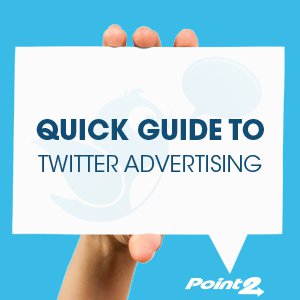You are viewing our site as an Agent, Switch Your View:
Agent | Broker Reset Filters to Default Back to ListA Quick Guide to Twitter Advertising for Real Estate
April 27 2015
 If you're not advertising on Twitter, you're missing out on the opportunity to reach nearly 288 million monthly active users on the platform. Not all of those users are your ideal clients, but your clients are definitely among them. The odds of earning their business plummet if you fail to reach out to them.
If you're not advertising on Twitter, you're missing out on the opportunity to reach nearly 288 million monthly active users on the platform. Not all of those users are your ideal clients, but your clients are definitely among them. The odds of earning their business plummet if you fail to reach out to them.
Twitter ads may be the perfect way to reach your clients among the masses. The platform allows you to control who sees your ads and when. What's better, perhaps, is that you pay only when you achieve your engagement goals.
Intrigued? Learn how Twitter can work for you:
Getting Started
There are four different kinds of Twitter ads:
- Promoted Tweets - One of the most popular options, Promoted Tweets, are individual tweets that show up in users' timelines based on their interests. Promoted tweets look like tweets from other users but there is a small, yellow promo indicator. If you have something very specific to promote (like a property or event) a promoted tweet could be the best way to go.
- Promoted Video - Like a promoted tweet, promoted videos appear in users' timelines. Videos are worthwhile investments. According to Nielsen research, "purchase intent lift was 28% higher for users who chose to watch brand videos on Twitter than for users who saw the same videos as pre- or mid-roll ads during a 22-minute program." In short, Twitter promoted videos can be more cost-effective than a commercial ad on TV.
- Promoted Accounts - These ads aim to increase your followers by displaying a thumbnail of your profile in a "Who to Follow" box that appears in timelines and on the sidebar of search results. Your account will be shown to users based on other accounts that they follow or keywords that they look up on Twitter.
- Promoted Trends - Promoted Trends are hashtags or terms that you can pay to promote. They are usually specific to events and times, like #mondaymotivation or #gameofthrones. Users can interact with a promoted trend in the same way that they interact with a trending topic.
It may take trial and error to find which ad options work best for you, but here's a hint: few companies cash out for all four options simultaneously. Perfect your advertising with one or two ad types and save your sanity.
What to Do
If you're advertising your real estate brand or real estate website through a promoted account, providing details will connect you to the right clients. In what neighborhoods do you specialize? What price bracket? What makes you different from other agents in the area? Don't make potential clients wonder if you've got what they need.
For promoted tweets and videos, you will want your ads to be as specific as possible. Include location, cost, availability and other details that will give viewers enough info to jump into your call to action. "Great townhouses for rent in Roswell! Click for details," won't do nearly as well as, "There are only TWO 3b/2ba townhouses left at Pike Court in Roswell. Apply here!"
Remember, Twitter is no longer about short and sweet text. It's equally important to have engaging visuals, such as images and videos. For example, adding an image to a promoted tweet can amplify your conversion rate by 306% higher over text-only tweets!
But before creating a bunch of tweets with pictures and paying to promote them, why not single out the tweets that are bound to be most successful? Post a tweet, wait, and turn it into an ad once you begin to see a notable amount of engagement. This is ideal because Twitter offers a sliding scale on cost per engagement (your cost based on the amount of retweets and likes that you receive). Advertising with a tried-and-true tweet will cost you less in the long run.
Twitter likes fresh, current content so don't forget to refresh your ads every two or three days. Good luck!
Have you tried Twitter advertising? How did you feel about the results?
To view the original article, visit the Point2Agent blog.









